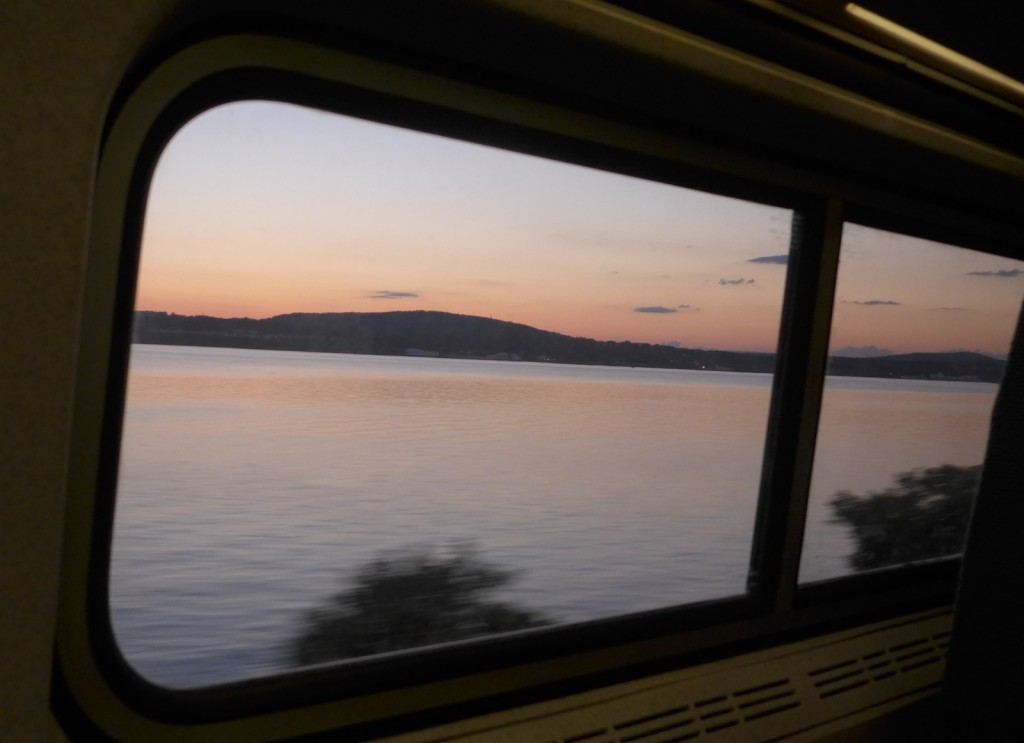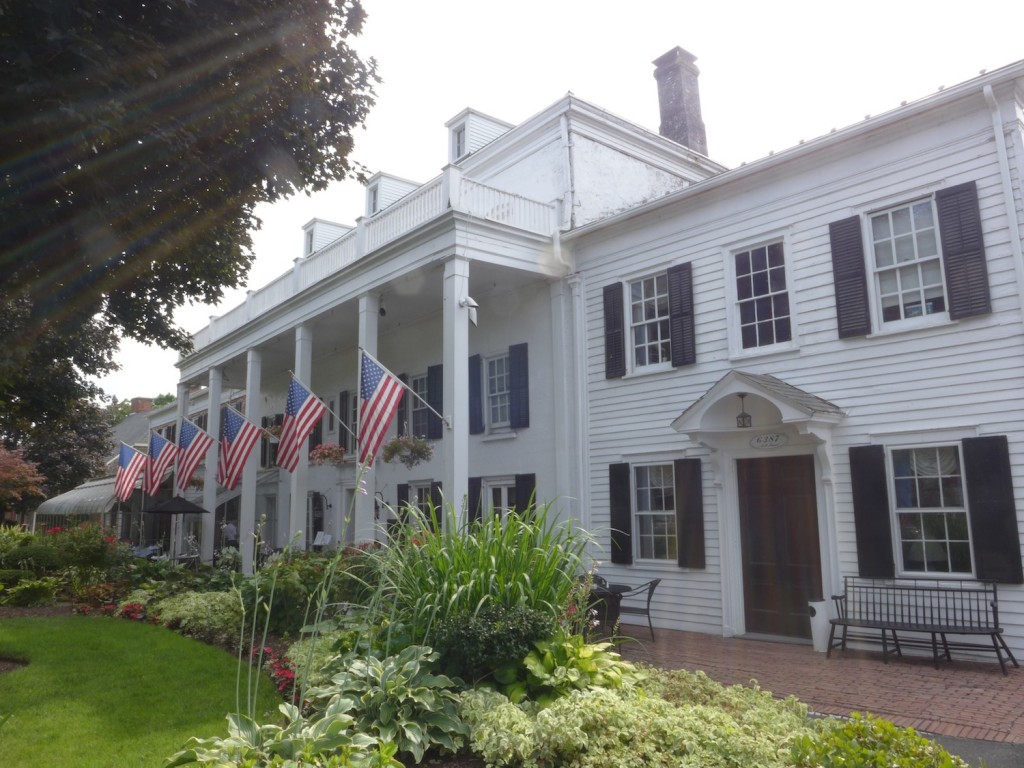I just returned from a couple of days in the Hudson Valley (pictured above minutes before my arrival) visiting my new friends Liz and Don O’Toole close to Rhinebeck. The landscape was almost invariably beautiful, sometimes utterly breathtaking and it was all very refreshing after some intense days in New York Wine City (NYWC) and the three months of toil writing my Riesling book BWWOE which begin in earnest tomorrow (August 1st). Some great food is being produced here, of which the pungent Hudson Red washed-rind cows’ milk cheese is a great ambassador.
I hadn’t planned to do anything but R&R, but yesterday Liz was suddenly energized and had marked a route on maps of the East and West banks of the Hudson connecting a string of wineries. This turned out to be slightly too ambitious, because the tasting rooms at several of the wineries turned out to be closed (also today sadly). So, in the end I saw a bunch of vineyards, but only tasted at two wineries. This makes it impossible to make the more general kind of observations I made about New Jersey wines after my day on the road there with Karl Storchman back in December. However, even what I saw and tasted at the well-regarded Millbrook close to the eponymous town and Whitecliff near Gardiner left me with the feeling that there’s still a lot of unrealized potential here. Hell, if the Hudson Valley wines tasted as good as those landscapes looked I’d have had a series of orgasms in the tasting rooms.
Here, as in many other cool climate regions, one of the fundamental mistakes made is putting a lot of energy and ambition into grape varieties which can barely ripen except in the best vintages. One of the best wines I tasted here was the 2012 Traminette at Whitecliff, because this unfashionable, early-ripening hybrid does well in this climate, giving a wine reminiscent of Gewürztraminer, but with more freshness and acidity (in this case it balanced the wine’s sweetness beautifully). Likewise at Millbrook I was charmed by the rather unpretentious light and dry 2012 Tocai Fruilano with its juicy, fruit salad flavors and a clean, bright finish. The red wines at both wineries were way more ambitious, but they didn’t impress in the same way, and to be frank for $20 plus per bottle at the cellar door I expect more.
Why weren’t the wines better? Although this may be quite a challenging climate to grow the European wine grapes in – everything is so green due to abundant rain and humidity during the summer, which means a lot of spraying against downy mildew, powdery mildew and black rot – my wine gut tells me this is somewhere which could produce a slew of medium-bodied whites with wonderful aromas and freshness. The reason that this is being realized so erratically was easy to find in the vineyards, some of which (no names mentioned) were poorly cared for. In some places the volume of the crop as well as the quality had been reduced as a result; a bean counter’s nightmare!
What I did find was plenty of history. I have to say that one of the few things about Americans as a whole which I dislike is their tendency to complain about how little history they have. Even is you ignore the between 15,000 and 20,000 years of Native American history prior to the arrival of Columbus back in 1492, many parts of America are rich in White European history. For example, the Beckman Arms Inn (pictured above) in Rhinebeck dates back to 1766 and has been in continuous use as an inn since then. In the historic district of Berlin where my apartment is (I return to the city in a week’s time) there’s only one secular building of comparable age! In the city we only have a couple of restaurants and hotels with as much as a century of history. Of course, the city’s newness – Berlin, like New York, only became a major industrial metropolis during the last 19th century – is one of its advantages, and recently it’s discovered how to take advantage of its special situation and be new in a way that’s simultaneously self-confident and self-critical (without the latter forget high quality regardless of the product!) The Hudson Valley’s wine industry needs to do this and to turn its small scale, compared with the New York State winegrowing regions of Long Island’s North Fork and the Finger Lakes, into a serious advantage.



![120114_riesling_global_RZ [1600x1200]](http://www.stuartpigott.de/wp-content/uploads/2013/08/120114_riesling_global_RZ-1600x1200.jpg)